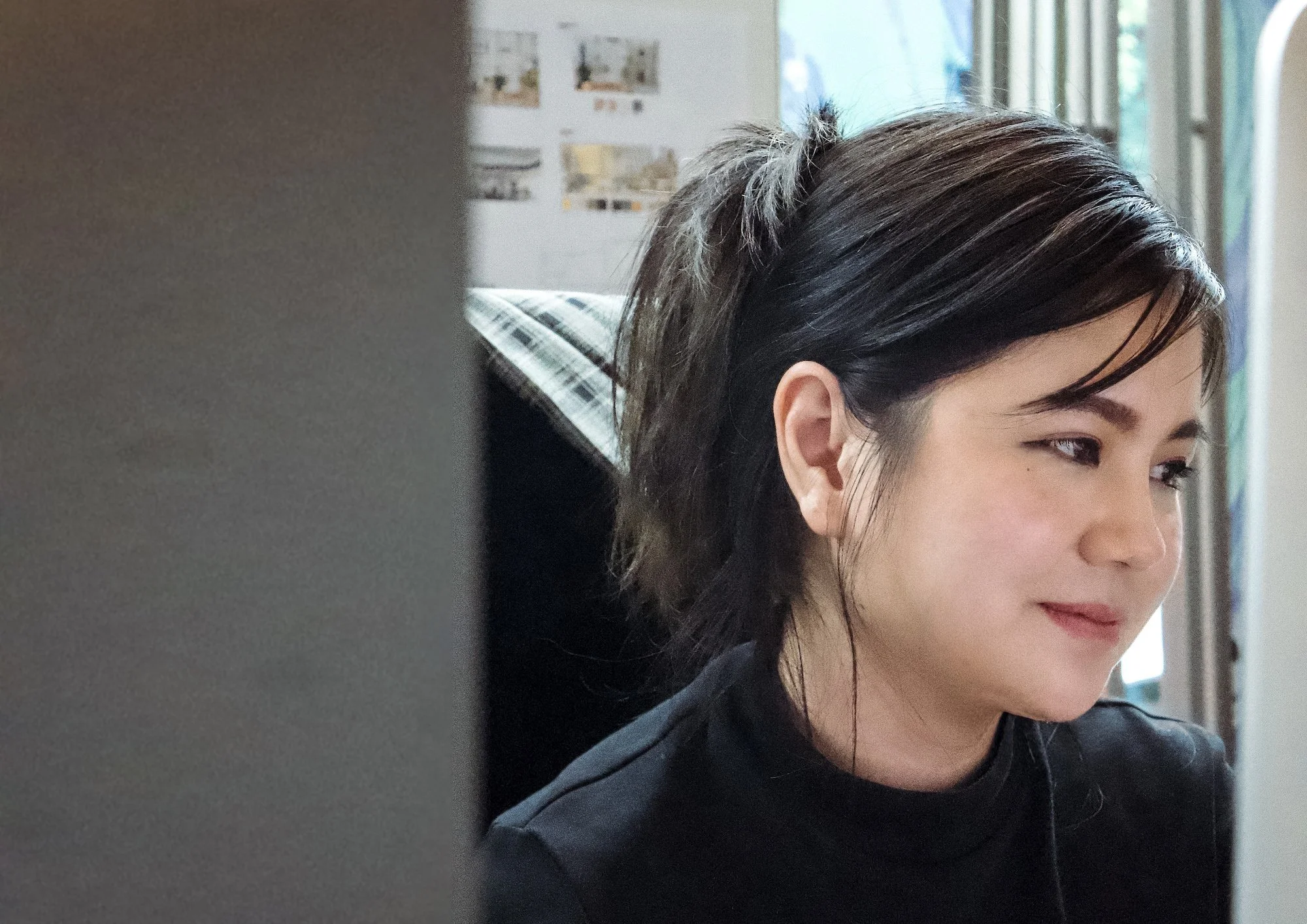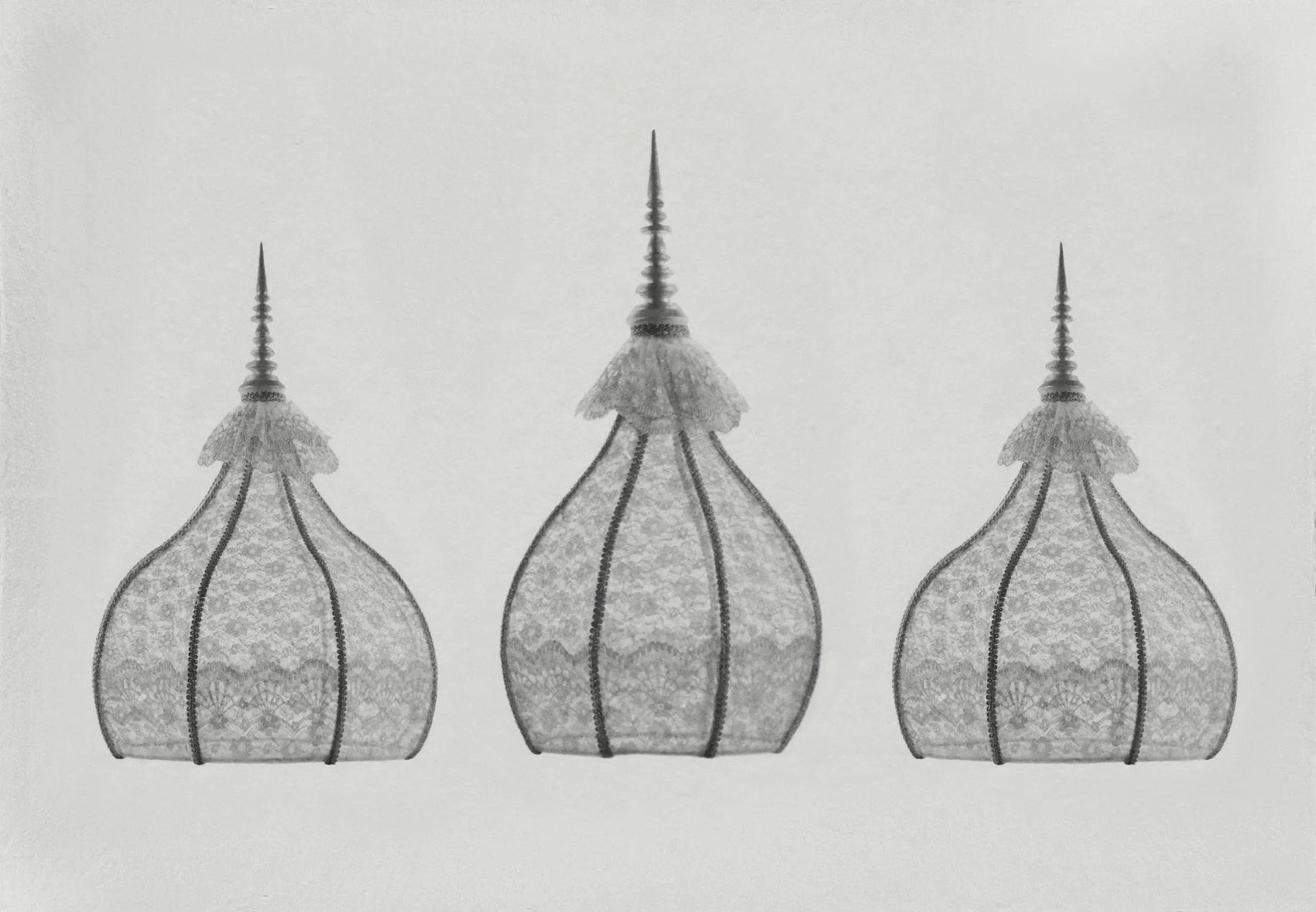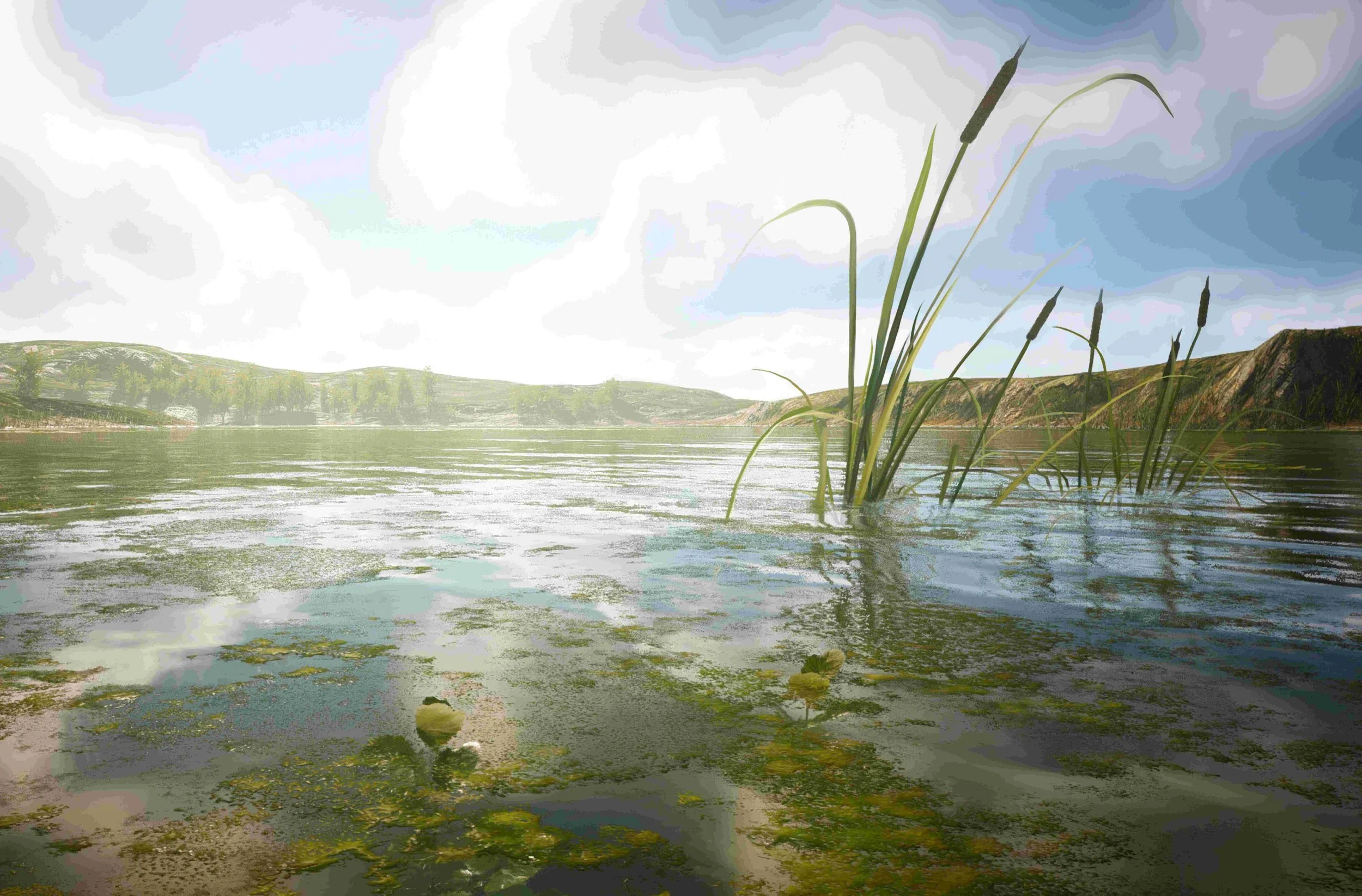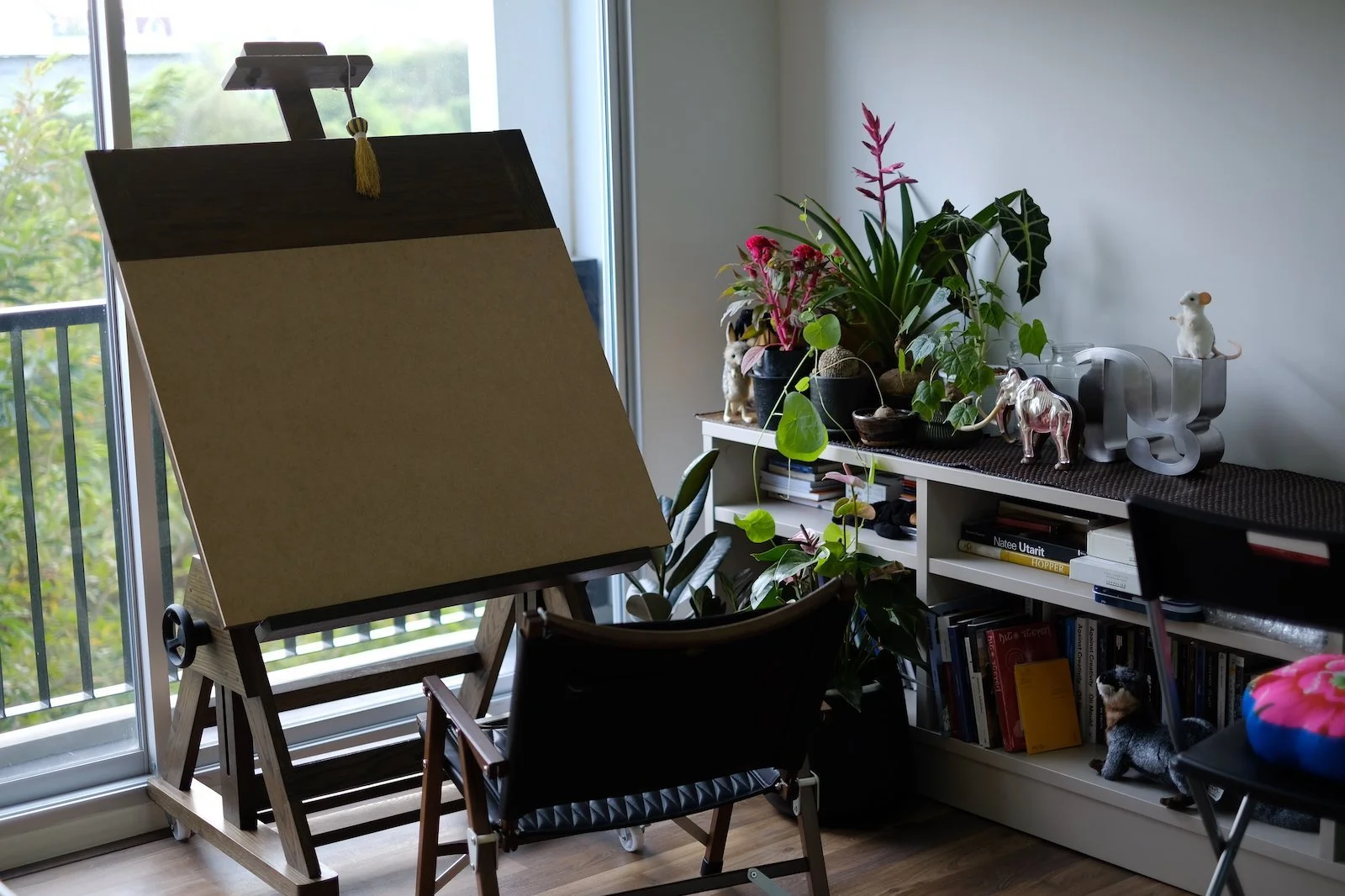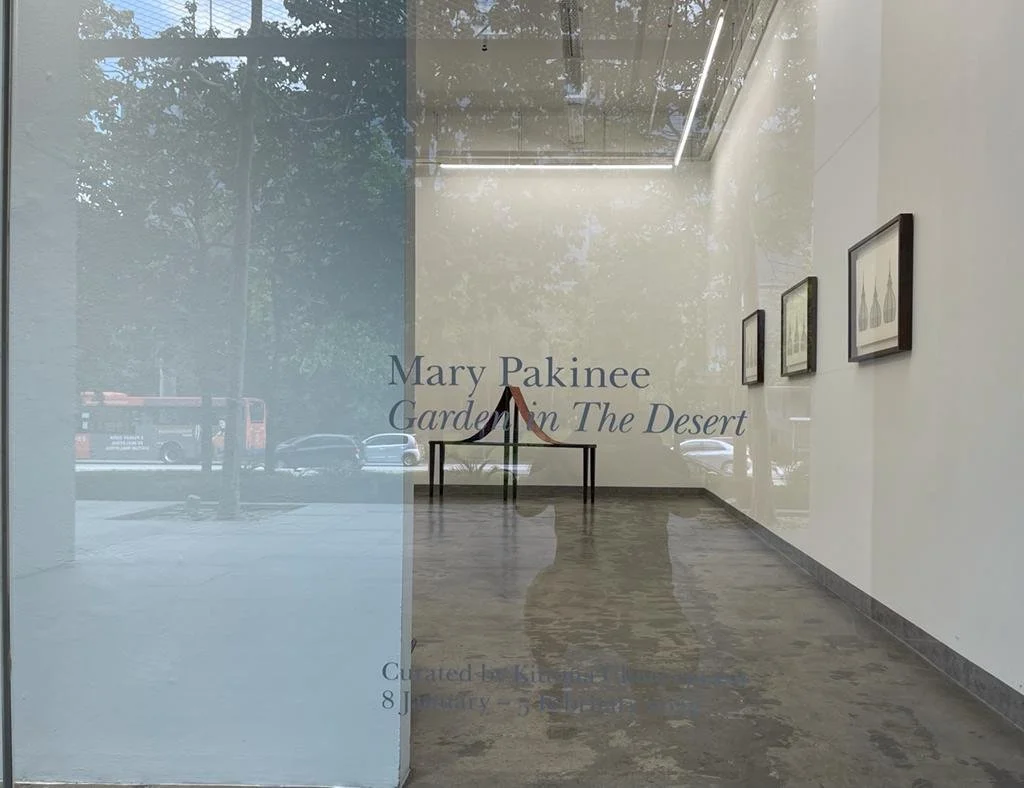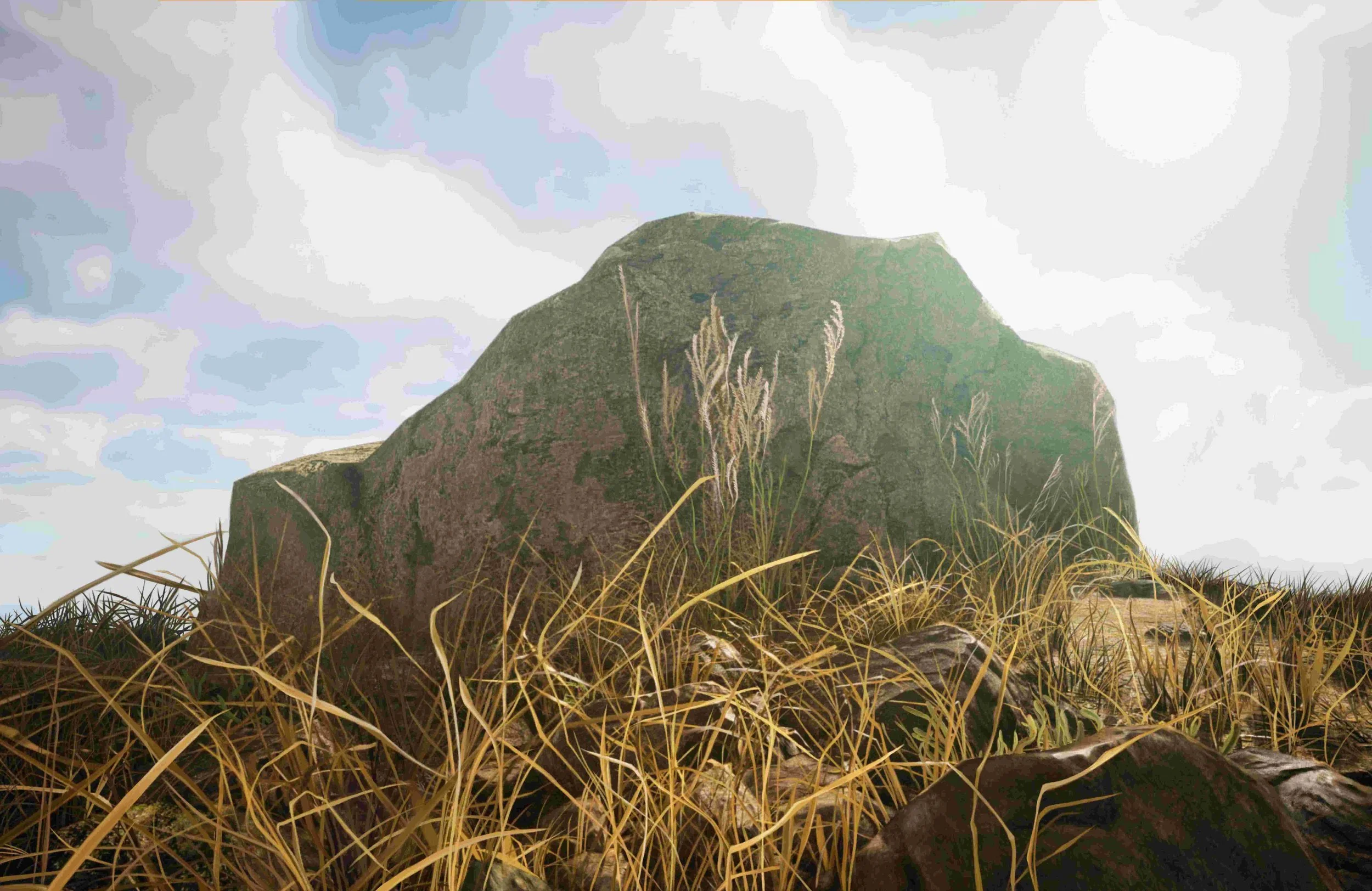Fresh Face: Mary Pakinee
Rendering an interior world
A&M's Fresh Face is where we profile an emerging artist from the region every month and speak to them about how they kick-started their career, how they continue to sustain their practice and what drives them as artists.
Mary Pakinee.
Pakinee Srijaronsuk (also known as Mary Pakinee) is interested in the themes of intimacy and perception, particularly how one relates to their surroundings. Through the use of drawing and digital techniques to render realistic images, she invites the viewer to explore an interior world.
Born in 1992 in Nakhon Ratchasima, Thailand, Mary graduated with a Bachelors in Visual Art from Bangkok University in 2015. Her solo exhibitions include No Man Land (2023) at S.E.A. Focus 2023, Garden in the Desert (2022) at A+ Works of Art, and ‘My Hands Remember How Your Body Felt (2016) at Bangkok University Gallery.
Mary Pakinee, Some Lake, 2022, 3D rendering and digital painting, printed on the metal sheet, 90 x 60cm. Image courtesy of the artist and A+ Works of Art.
Mary’s latest solo presentation No Man Land (2023) raises complex questions about our relationships with digital environments, the natural landscape, and mental spaces. At the heart of No Man Land is a virtual world the artist created using Unreal Engine, a 3D computer graphics game engine. It is an open-world void of humans, but filled with various plants and natural formations. While this realm bears an uncanny resemblance to our imagination of “untouched nature”, the artificial paradise is in fact composed of randomly placed 3D models based on a pre-designed blueprint.
In the video work by the same title, the audience occupies the perspective of a player exploring this virtual world. Even though the viewer is surrounded by a beautiful expansive landscape, there is a creeping sense of alienation. Periodically, a loud bang is heard. The player blacks out, only to wake up and continue wandering around. This cycle stirs feelings of confusion, desperation, even futility. No Man Land speaks to issues about environmentalism and our escape into digitally-simulated experiences of nature in video games. However, it is also a layered commentary that connects these environments with deep-seated emotions. Mary activates the mechanics of game design to create spaces for empathy and complexity.
Mary Pakinee, Under the Lace no.6, 2021, drawing on washi paper, 59.4 x 42cm (frame not included). Image courtesy of the artist and A+ Works of Art.
Mary Pakinee, My Hands, 2016, cosmetic drawing on paper, 54.5 x 78cm (without frame). Image courtesy of the artist.
Mary deftly moves between analogue and digital techniques. Though she became familiar with digital tools through her work as an illustrator at various design firms, her earlier bodies of work are traditional observation-based drawings. One aspect that ties them together is a fidelity to realism. Whether one is looking at the pores of a lover’s hand drawn with cosmetics, a delicate flower blooming in the desert, or the crystal-clear 3D rendering of paradise in No Man Land, fine details draw the viewer into Mary’s interior world.
Interview
Mary Pakinee, Some Pond no.02, 2022, 3D rendering and digital painting, printed on the metal sheet, 76 x 51cm. Image courtesy of the artist and A+ Works of Art.
In 2015, you graduated with a Bachelors in Visual Art from Bangkok University. Can you describe your experience?
The course I took predominantly focused on contemporary art. There were no modules such as painting, printing, or sculpture. Instead, I learned all the basics during the first year, including experimenting with exhibitions to understand all the steps required to organise one. This was quite in line with my sensibility of having multiple interests. I had diverse experiences at university, and it was also where I met many people in the industry.
Mary Pakinee, My Hands (detail), 2016, cosmetic drawing on paper, 54.5 x 78cm (without frame). Image courtesy of the artist.
Mary Pakinee, My Hands Remember How Your Body Felt, 2016, exhibition view at Bangkok University Gallery. Image courtesy of the artist.
How did the opportunity for your first solo exhibition My Hands Remember How Your Body Felt at Bangkok University Gallery, Thailand, come about? Could you talk about the body of work presented as well as one challenge you faced preparing for it?
My Hands Remember How Your Body Felt was presented as a part of the BRANDNEW Art Project 2016. It is a programme that consistently supports new emerging artists and art critics. Each year, curators come to find young artists they are interested in. The guest curator in 2016 was Angkrit Ajchariyasophon.
My practice primarily references my personal experiences and relationships that have been brought to connect with the period. My Hands Remember How Your Body Felt is about a past relationship when I was 24. At that age, I focused on archiving something to support my ego. I was obsessed with having ownership and that sentiment motivated me to draw objects that only I could “own”. The drawings were of my ex-boyfriend's bare skin. I drew them with cosmetics such as powder foundation, blush, and eye-shadow which one would associate with women.
Mary’s workspace. Image courtesy of the artist.
Who has been a mentor or an important artistic influence? And why?
No specific one. I am a lucky girl. All my professors were great, and most of them are important figures in the art scene. I have learned and gained exciting perspectives from their practices.
What has been an important piece of advice you have been given?
Be sincere in your work.
Do you make a living from being an artist?
This year, I am starting to make a living solely as an artist. Before this, I had a day job as an illustrator and project manager in a design and technology company. I have no regrets about spending many years working for other people. It has given me a wide range of experiences and opened a whole new world to me. I have met so many people from different careers that I never thought I would meet. Everything that happened has allowed me to truly understand myself and the world.
“I have no regrets about spending many years working for other people… Everything that happened has allowed me to truly understand myself and the world.”
Mary Pakinee, Garden in the Desert, 2022, exhibition view at A+ Works of Art, Kuala Lumpur. Image courtesy of the artist and A+ Works of Art.
Mary Pakinee, Somewhere in the desert no.01, 2022, drawing on washi paper, 59.4 x 84.1cm (frame not included). Image courtesy of the artist and A+ Works of Art.
In 2022, you had your second solo show Garden in the Desert at A+ Works of Art, Kuala Lumpur. What inspired this title? And could you talk about the symbols and imagery depicted in your drawings?
2022 was a period of standing by myself. I have learned from all my brokenness that only I will stay with me. This exhibition was separated into two parts. The first featured a bride's objects in a Thai wedding, and the second consisted of flowers and plants in the desert. I associated my life with the metaphor of a plant that could grow on its own in the arid and inhospitable areas of the desert. By drawing lots of images of plants in the desert, I tried to make my own Garden in the Desert.
Mary Pakinee, Some Rock, 2022, 3D rendering and digital painting, printed on the metal sheet, 76 x 51cm. Image courtesy of the artist and A+ Works of Art.
You presented a very different set of works at S.E.A. Focus 2023. What were the ideas you wanted to explore with Artificial Nature? And could you explain the process behind this series of works?
I have a lot of interests, and from my experience in various jobs, I became interested in digital technology. I am curious about games and virtual worlds. They remind me of my mental world that I could never articulate or explain. For this project, I tried to create a world that replicates my feelings. In the process of building the landscape, I tried to let my intuition lead me. I threw various materials into the programme based on spaces familiar to me. After that, I explored it again. It made everything in the world seem familiar. But when the composition comes together and is carefully examined, none of it resembles reality at all. I see this as a process of navigating the world of my depression.
The presentation features a video work as well as digital prints. The prints consist of screenshots overlaid with digital painting. For audiences who are not familiar, are there ways to tell which elements in the image are painted? Why did you decide to intervene or edit the screenshots?
The video is my attempt to simulate the experience of when I am down. It is the feeling of waking up in another world. After I open my eyes, I look around but I do not know anything about that world. The only thing I can do is live and surf with it. Then I walk and walk, as if I am going to find something. And bang! I am shot, I black out, and I wake up again. This process repeats again and again.
Regarding the prints, I capture scenes that speak to me, like Some Stone, which reminds me of the idiom 'set in stone'. I named my artworks with the preface “some” because I do not know them. I know only a common name for them. I just discovered them but I do not own them. They mystify rather than clarify. For me, the painting is an expression of an artist's perspective. I present to my audience what I want them to see in that world, not the truth. It can be likened to how I show some parts of myself, but not all of me.
“I present to my audience what I want them to see in that world, not the truth. It can be likened to how I show some parts of myself, but not all of me.”
Do you find it challenging moving from an analogue medium like drawing on paper into digital works? What excites you about each medium/ technique?
For me, there is no difference between drawing on paper and digital painting. Maybe it is because I was a former illustrator. The material is chosen based on what I decide is the best way to present each project.
Could you share your favourite art space or gallery in Thailand? Why are you drawn to that space and what does it offer to you or your practice?
Bangkok CityCity Gallery is so interesting to me. It is a white cube space with extra high ceilings. When you walk into that space, it is like you are cut off from the world. I have not exhibited there, but I can imagine it would be a challenging space.
What are your hopes for your own local art scene, and regionally as well?
Currently, the art scene in Thailand is quite troubled. This is because our political situation is quite bad and our people are suffering from injustices, which exacerbates economic inequality. If people are unable to eat well and sleep peacefully, the art world cannot grow. I hope everything will be resolved soon so that Thai people and Thai art can truly be the world's citizens.
Are there any upcoming exhibitions/projects that you would like to share more information on?
I am about to show with the EARLY YEARS PROJECT programme in May, which is organised by Bangkok Art and Culture Centre (BACC). I am creating works using the technique from My Hands, based on my current mindset about this period of time. I hope people will be able to connect with my thoughts.

